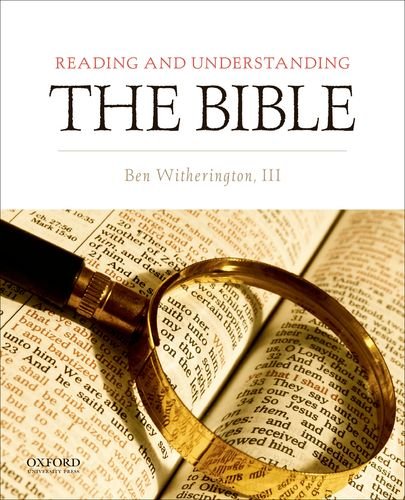Reviewed by Andy Naselli
Few New Testament scholars today have published as prolifically as Ben Witherington. He has authored over forty books, nearly half of them detailed commentaries on the New Testament. He is unusually gifted at communicating well on multiple levels in print or speech, whether his audience is scholarly, academic, or popular.
Reading and Understanding the Bible is a popular-level book on hermeneutics. The reader who is unfamiliar with Witherington cannot miss that this book’s author has published a lot on the New Testament: throughout the book in footnotes or in the main body or in recommended reading sections at the end of chapters, Witherington recommends his own books at least twenty-three times. That makes sense since this book distills a lot of Witherington’s previously published work.
If I had to rate this book on a scale of 1 to 10 (with 1 being terrible and 10 being outstanding), I’d give it a 6.
On the one hand, the book isn’t bad. It’s relatively engaging and based on a lifetime of diligent research. I wish that more hermeneutics texts emphasized what Witherington does in his section “Oral Examination” (pp. 53–58), which shows how the human authors of the Bible intended that people would orally hear their words.
On the other hand, the book doesn’t rise to the top in a crowded field of books on hermeneutics. And it doesn’t help that I disagree with some of Witherington’s exegetical arguments and theological distinctives. For example, he argues that dia pisteōs Christou refers to the faithfulness of Christ rather than faith in Christ (p. xi, 197); he is derogatory towards young-earth creationism and defends an old earth as if it is the only viable option, without interacting with any robust counter-arguments (pp. 11–14); he asserts that Jesus cleansed the temple only once (p. 24); he thinks that Marks 16:8 “is not the original ending” of Mark but that “the original ending is lost but probably can be reconstructed from Matthew 28” (p. 208); and he doesn’t hide his egalitarianism (pp. 14–15, 75) or Wesleyan-Arminianism (pp. 104–5, 199, 247). And it’s no surprise that the same socio-rhetorical reading of the New Testament that characterizes his commentaries also permeates this book (esp. pp. 58–71), but I’m not convinced that this is the hermeneutical key that Witherington thinks it is.
Overall, Witherington’s book is helpful. But I would recommend other books first, such as Robert L. Plummer, 40 Questions about Interpreting the Bible (40 Questions; Grand Rapids: Kregel, 2010); Robert H. Stein, A Basic Guide to Interpreting the Bible: Playing by the Rules (2nd ed.; Grand Rapids: Baker Academic, 2011); J. Scott Duvall and J. Daniel Hays, Grasping God’s Word: A Hands-On Approach to Reading, Interpreting, and Applying the Bible (3rd ed.; Grand Rapids: Zondervan, 2012); and Andreas J. Köstenberger and Richard D. Patterson, For the Love of God’s Word: An Introduction to Biblical Interpretation (Grand Rapids: Kregel, 2015).
Andrew David Naselli
Bethlehem College & Seminary
Minneapolis, Minnesota, USA
Buy the books

Reading And Understanding The Bible